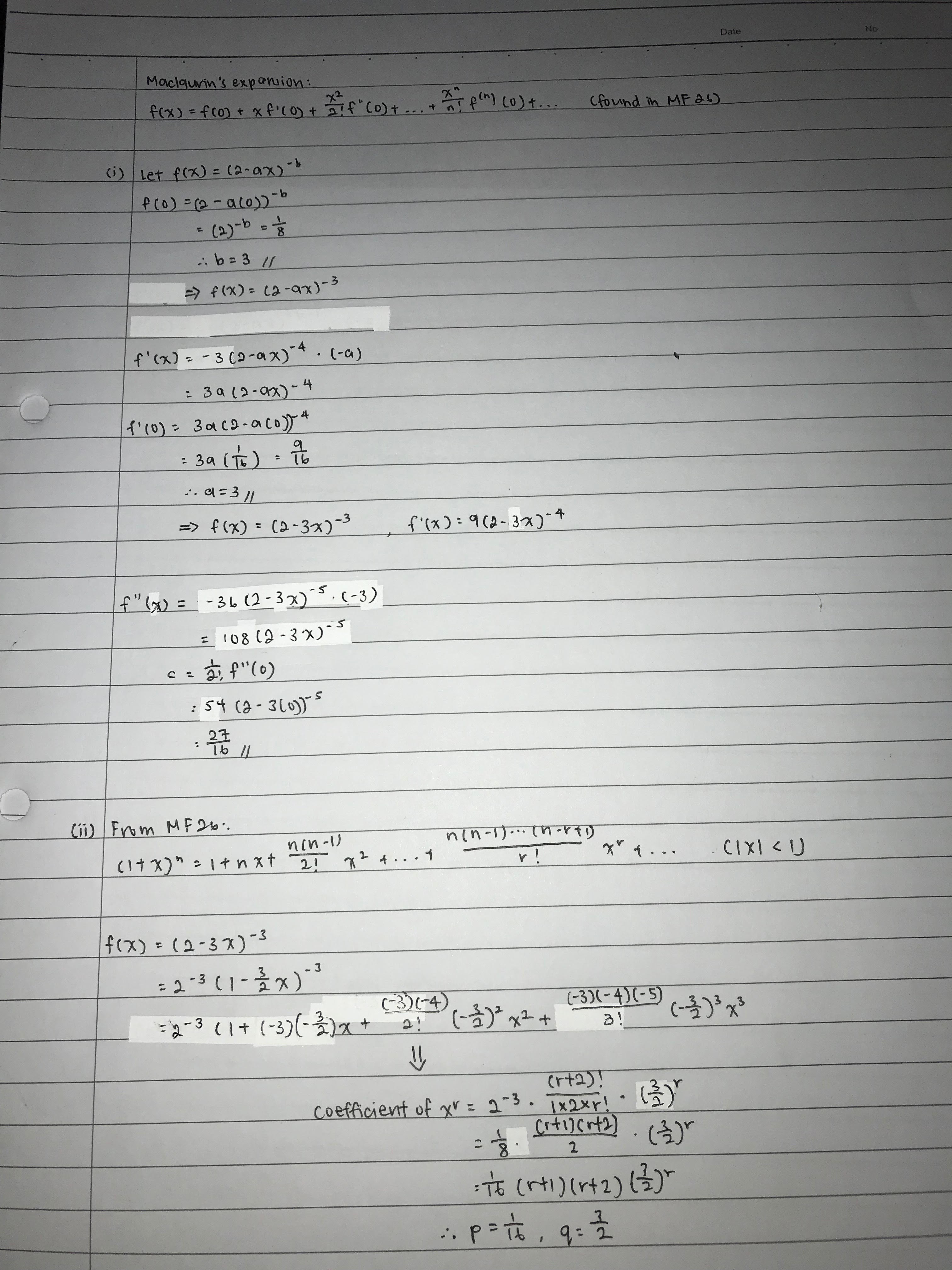Ask Singapore Homework?
Upload a photo of a Singapore homework and someone will email you the solution for free.

See 1 Answer
done
2 Upvotes
clear 0 Downvotes

(i) Since the coefficient of the 1st and 2nd terms are given, substitute x = 0 into given expression to find the value of b by comparing the expression to the given term.
Do the same for the second term by differentiating f(x) to find f'(x) and hence f'(0), in order to find a.
To find c, use the Maclaurin's expansion and the values of a & b.
(ii) For the second part, some pattern recognition is required. In order to use the Maclaurin's expansion of (1 + x)^n, you must first divide the terms by 2 to convert the expression to a similar form. When bringing the 2 out of the expression, remember to include to the power of -3. When you expand the expression according to the given Maclaruin's expansion, you should see that all negative signs should cancel out (i.e when there are two negative terms at the numerator of the fraction, (-3/2) has an even power, when there are three negative terms on the numerator, (-3/2) has an odd power). Hence the coefficient will always be positive.
The numerator of the fraction is n(n-1)(n-2)...(n-r+1), which will correspond to (-3)(-4)(-5)(-6)...(-r-2). Since we've established that the coefficient is positive, by removing the negative signs, the numerator is (r+2)! / 2 (since 1 and 2 are not in the factorial). This cancels out with the denominator of the fraction to give (r+1)(r+2)/2. From here, you can find p and q by multiplying the fraction with the terms 2^-3 and (3/2)^r, according to the Maclaruin's expansion.
Do the same for the second term by differentiating f(x) to find f'(x) and hence f'(0), in order to find a.
To find c, use the Maclaurin's expansion and the values of a & b.
(ii) For the second part, some pattern recognition is required. In order to use the Maclaurin's expansion of (1 + x)^n, you must first divide the terms by 2 to convert the expression to a similar form. When bringing the 2 out of the expression, remember to include to the power of -3. When you expand the expression according to the given Maclaruin's expansion, you should see that all negative signs should cancel out (i.e when there are two negative terms at the numerator of the fraction, (-3/2) has an even power, when there are three negative terms on the numerator, (-3/2) has an odd power). Hence the coefficient will always be positive.
The numerator of the fraction is n(n-1)(n-2)...(n-r+1), which will correspond to (-3)(-4)(-5)(-6)...(-r-2). Since we've established that the coefficient is positive, by removing the negative signs, the numerator is (r+2)! / 2 (since 1 and 2 are not in the factorial). This cancels out with the denominator of the fraction to give (r+1)(r+2)/2. From here, you can find p and q by multiplying the fraction with the terms 2^-3 and (3/2)^r, according to the Maclaruin's expansion.
Date Posted:
6 years ago




